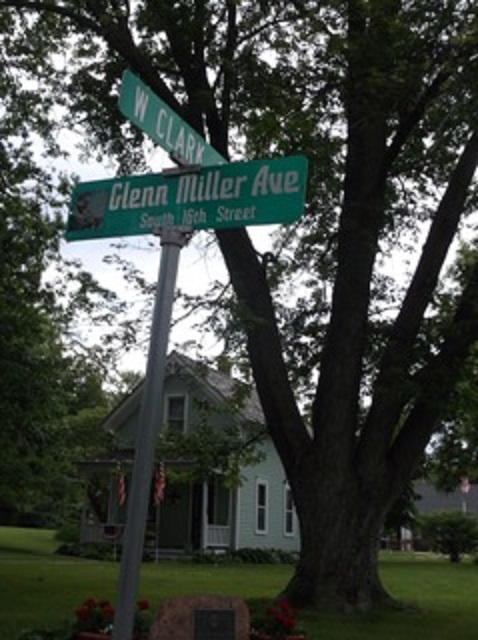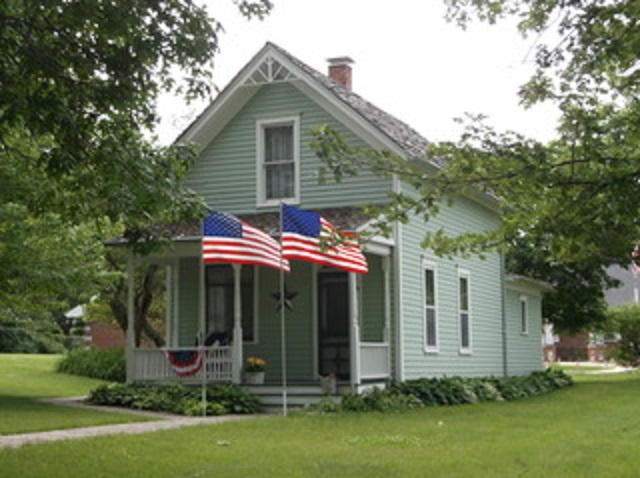
When I attended the Glenn Miller Festival in June in Clarinda, Iowa, I visited his namesake museum, located directly behind the house in which he was born. First, a little about the house, located at the southwest corner of 16th and Clark Streets. 16th, the main north-south street in town, has been renamed Glenn Miller Avenue, at least in the immediate vicinity of the house. There’s also a Glenn Miller Drive in town, but it’s a short side street.
Glenn lived only three or four years in this house, until his family moved to Nebraska. Subsequent owners added to the house, which originally had three rooms on the ground floor and two upstairs. There was an outhouse that’s still on the property, but I’m not certain it’s the original. It stands to reason that indoor plumbing was installed at some point.
In 1989 Glenn’s adopted daughter Jonnie, whom he never saw, bought the house and donated it to the Glenn Miller Birthplace Society. The house was then painstakingly restored to its original size. While all the furnishings are period-accurate, only one or two are known to have belonged to the family. Docents are on hand to show you through the house.
The museum opened in 2010, bringing the entire south side of Clark between 16th and 17th under the Society’s ownership. It contains an exhibit area, media room that includes a kitchenette, and a store. The GMBS’s office is in the building.
A casual visit takes about 45 minutes. Those wishing to delve more deeply into Glenn’s history should allow about twice that much. No videos about his life were playing while I was there, and I’m not sure if there are any.
The bulk of the displays are photos, news clippings and posters of and about Glenn, all adequately identified as to where, when and whom. There are some artifacts, such as the last drum set owned by Moe Purtill, the band’s drummer, and quite a few Victor and Bluebird 78s of the band’s biggest hits. These, of course, are not particularly rare, as several sold in the millions. The gold record Glenn received for “Chattanooga Choo Choo” is there. Perhaps the most unusual pieces are the stainless steel bandstands manufactured by the Budd Railway Car Company and designed by that firm’s chief engineer. These were donated by Tex Beneke, who used them when he became the first director of the Miller band after World War II.

If you are just a casual fan of Glenn Miller, you probably would not make a special trip to visit the museum unless you happened to be in the area. But a more serious aficionado would do well to make a pilgrimage. And those who are even deeper “into the weeds” would want to visit the archives at the University of Colorado in Boulder, curated by Dennis Spragg. Dennis is the author of Glenn Miller Declassified, the definitive source about Glenn’s disappearance.
Check www.glennmiller.org for details about the museum’s hours of operation.
Bill Hoffman is a travel writer, an avid jazz fan and a supporter of musicians keeping traditional jazz alive in performance. He is the concert booker for the Tri-State Jazz Society in greater Philadelphia. Bill lives in Lancaster, PA. He is the author of Going Dutch: A Visitors Guide to the Pennsylvania Dutch Country, Unique and Unusual Places in the Mid-Atlantic Region, and The New York Bicycle Touring Guide. Bill lives in Lancaster, PA.




















